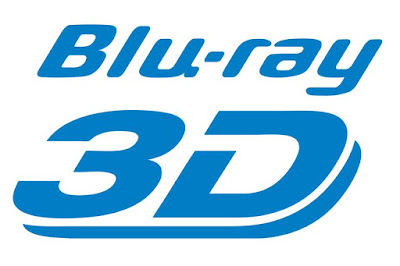Disney Drops 3D Blu-Ray Distribution in the U.S. Market
If the Disney corporation can't be bothered to say this to the public, I will: Disney has stopped producing and distributing 3D Blu-ray versions of its 3D movies in the United States.
I've been searching all over the 'net to find confirmation of this, but I can't find an official press release from Disney about the status of its 3D Blu-rays at all. Based on the recent home video releases of Thor: Ragnarok, Coco, and Star Wars: The Last Jedi (all of which were released theatrically in both 2D and 3D), it appears that Disney has given up on the 3D Blu-ray format in the U.S. 2D formats, both standard definition Blu-rays and 4K ultra high definition (UHD), will be Disney's preferred home video mediums in the U.S. for the foreseeable future. However, Disney will continue to release 3D Blu-rays in markets outside of the U.S.; thus, 3D buffs (like me) will be stuck with either buying region-free 3D Blu-rays and/or region-free 3D Blu-ray players.
Of course, other American movie studios haven't stopped releasing 3D Blu-rays but Disney's decision will inevitably impact what other studios will do in the future. Between Disney's withdrawal from the 3D Blu-ray market and 3D-capable HDTVs and Blu-ray players disappearing from the shelves of American electronics stores, the 3D home video market in the U.S. will just keep shrinking.
The foreign release of Coco on 3D Blu-ray.
I've been watching how the entertainment industry has been treating 3D films for years and it has only been a matter of time before something fell apart in the domestic market. It's not that 3D movies--or 3D entertainment in general--are unpopular; yet between fewer people attending movie theaters in recent years and the home video market's movement away from physical media, Hollywood has begun to regard 3D movies as theater-only content.
The rumors I've been reading suggest that Hollywood still thinks that it can bring audiences to theaters through 3D movies, and it is ending the release of 3D Blu-rays to further encourage audiences to go to the theaters. In other words, by limiting the distribution of 3D content in the home video market, Hollywood thinks that it can keep tickets sales up for 3D movies at the theaters. Of all of the plans that the movie industry has hatched over the years to maximize profits from movie distribution, this is the first and only one that I can remember where an entire segment of the home video market is stopped.
Personally, I think that Hollywood is making almost the same mistakes it made when it first released 3D movies during the 1950s. Back then, the technology existed to make top-notch 3D movies; unfortunately, the technology did not exist to guarantee reliable exhibition of the movies, and this key flaw ultimately led Hollywood to choose the widescreen format as the way to keep people going to movie theaters. Had Hollywood waited for movie theater technology to become affordable enough to ensure that 3D movies could be shown reliably in theaters everywhere, the original golden age of 3D films would have lasted much longer than a few years. Now, Hollywood can make 3D movies and distribute them to theaters, on Blu-ray and online, but it miscalculated how poorly theaters are competing against other forms of film distribution--especially digital, on-demand movie rentals--so it has resorted to stopping the distributing of 3D films on Blu-rays to keep money coming into the theatrical model of movie distribution.
The foreign release of Star Wars: The Last Jedi on 3D Blu-ray.
3D Blu-rays are still being sold in foreign markets and 3D movies are still being made in other countries. With the U.S. dropping out of the 3D Blu-ray market, this could allow other countries to widen the distribution of their own 3D products to American 3D buffs that are looking for means of buying new 3D titles and new 3D video equipment. On the other hand, how many American consumers are willing to look for buy American 3D movies from foreign video dealers (including current and future 3D movies released by Disney) has yet to be determined.
Regardless, this development shows a clear lack of forethought by Hollywood about how digital movie distribution venues (which are growing in number every day) will chew into the profits of movie theaters. Due to the internet and wireless HD hand-held video-capable devices, I think that the theatrical model of movie distribution is reaching the end of its lifespan. Some theater chains will survive, but the number of movie theaters will most likely go down in the years to come. It's a shame, though, that the 3D home video market in the U.S. has to be shut down to compensate for Hollywood's poor planning.






Comments
Post a Comment